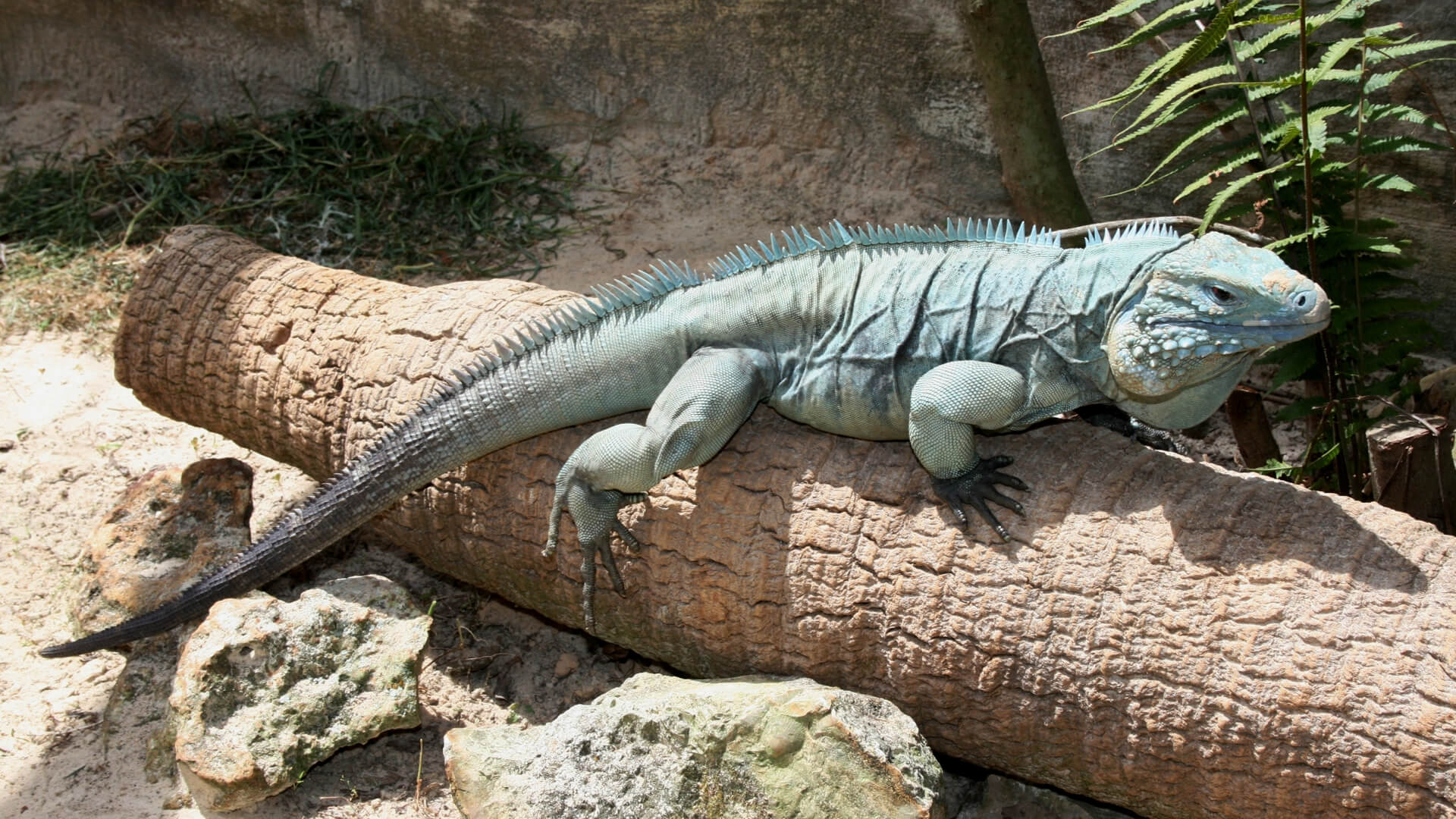
Once abundant, these iguanas have been headed for extinction since the colonization of the West Indies. Their future now rests on managed populations in protected areas and continued education efforts.
Grand Cayman rock iguanas are endangered mostly due to human activity. Introduced invasive species, such as rats, cats, dogs, and pigs, prey upon the iguanas. Additionally, habitat destruction and the occasional road kill are responsible for their decline in numbers. The Central Florida Zoo participates in a Species Survival Plan, or SSP, for this iguana. This is a coordinated effort between several AZA accredited Zoos across the U.S. and the government of the Cayman Islands. Between captive breeding and protection of suitable wild habitat, there is a chance we can keep this species from going extinct!

One of the longest living species of lizard in the world, the Grand Cayman rock iguana can live up to 69 years.

Andrea
There are three main groups of iguanas: rock, tree-dwelling, and marine. These iguanas prefer life on the dry ground.
Grand Cayman Island
Coastal uplands
4–5 feet long | 15–20 pounds
Plant material, occasionally insects
Invasive species (rats, feral cats, and feral dogs)
Tail can be used as a whip
1–22 eggs per clutch
Endangered
20–45 years
